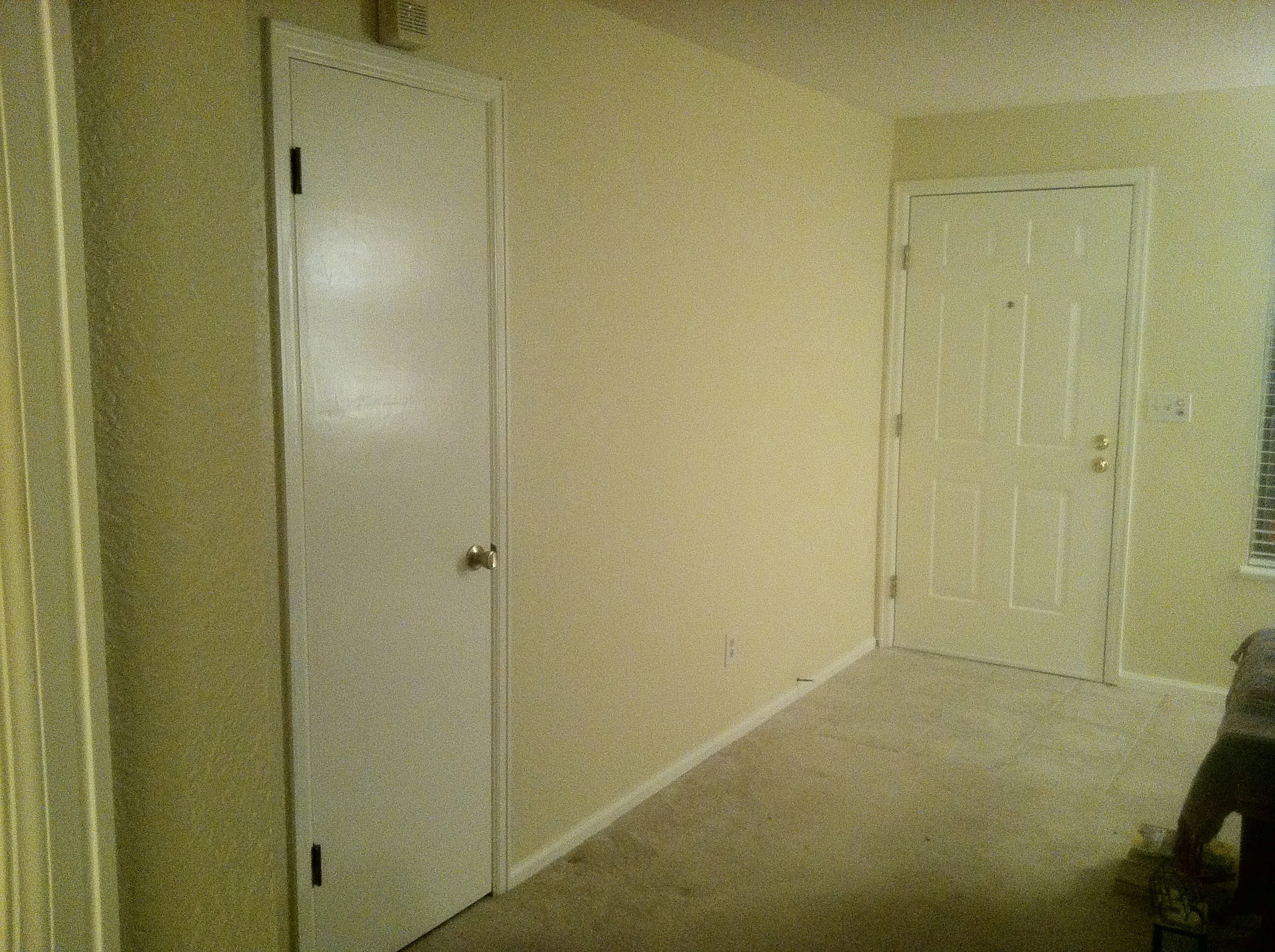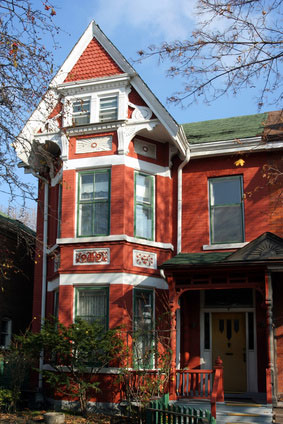Keep paint off specific surface areas and trimwork when painting your room
There are a couple of ways to properly “cut in” for even, consistently straight lines.
One approach, is to cut in with no protection against mistakes, known as freehand. The other way is to simply mask the intended area (usually wood or trimwork), to protect against over-brushing or rolling.
Freehand Method
This is just what the title suggests. You are applying paint directly to your target area with no backup masking tape to protect from mistakes. So, for you adventurous types, in addition to using a good quality brush, I would also suggest you employ a steady hand, along with a wet rag – just in case you goof up. And don’t worry when (not if) you goof up, everybody does at some point (even professionals!). Just have that wet rag handy and ready to go should you need it.
Here’s a couple of images to give you an idea what I’m talking about ….
For beginners, and even moderately experienced painters, I would suggest this next method for excellent cut in results …..
Masking With Blue “Painter’s” Tape
If you don’t feel you’re quite ready to tackle freehand just yet, then by all means, use blue “painter’s” masking tape to protect any surface you don’t want painted. I’ve been painting for many years, and I still do this step, because it works.
(I hate to admit it, but I’ve really never had as steady hand as I’d like to think I have)
When using blue tape, always make sure to use a straight edge (putty knife) to firmly secure the tape to the surface. This will prevent the paint from seeping under the tape, and onto your trim. In the event there is bleed-back, wipe off with rag soaked in soapy hot water, or touch-up with original trim paint.
Time To Cut In
There is, however, one thing left to do before we start, and that is paint preparation . Please read this page so you can make sure your room (or whatever it is you’re painting) is clean, and free of clutter. Once you’ve done this step, you’re ready to go.
Whether you’ve chosen to use the freehand method for cut in, or use blue masking tape to protect trimwork, the basics still apply.
Room clutter free
Lay out drop-cloth(s)
Mask off all the trimwork (windows, doors, baseboard) if this is desired method
Start in one corner, and cut-in at ceiling joint (where the wall meets the ceiling) around the entire perimeter of the room
With your paintbrush, coat the corners of the wall, and around the trim and woodwork. Be careful not to get paint on the woodwork (if freehand), and try to hold a steady hand as possible. Again, always have a wet rag handy for goof-ups. And don’t be afraid to use the rag (a lot!).
After you’ve finished with the cut in procedure for all the corners and around the wood and trimwork with the paintbrush, you’re ready to roll the walls.
Cutting-in the ceiling, painting the corners of the walls, and carefully cutting in around the wood and trimwork will ensure a consistent, professional-looking job.
TOP of Proper “Cut In” Procedure For Walls, Ceilings.

 residential painters highlands ranch
residential painters highlands ranch

